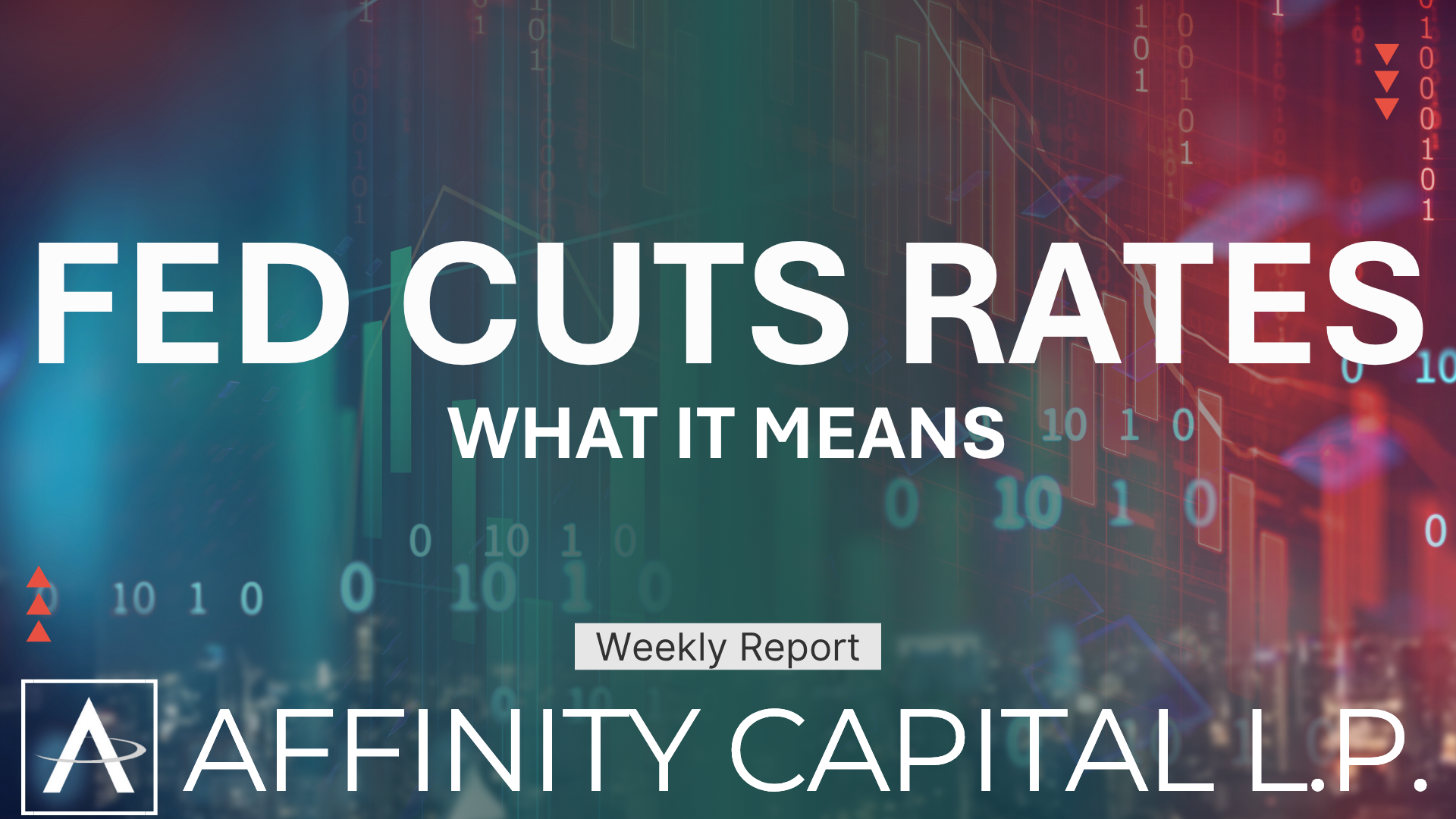December 1, 2025
As we move into the final month of 2025, markets are adjusting to a new mix of encouraging economic trends and lingering uncertainty. November ended on a softer note, but December has opened with improved sentiment, clearer expectations around Federal Reserve policy, and a more confident tone in both equity and fixed income markets. Investors are watching these shifts closely, and the weeks ahead will help determine how the year ultimately finishes. At Affinity Capital, we continue to see an environment supported by quality leadership, steady earnings, and more attractive income opportunities. At the same time, late-cycle pressures and uneven economic data remind us that thoughtful risk management remains essential. A More Constructive Tone to Start December December began on firmer footing after several weeks of mixed performance. The most significant driver has been the market’s growing conviction that the Federal Reserve is getting closer to the start of a rate-cutting cycle. Current pricing suggests a meaningful chance of a cut in the near term, which has helped lift sentiment across equities and high-quality bonds. This optimism has also supported areas that tend to benefit from lower yield expectations, such as precious metals and rate-sensitive parts of the market. While not a guarantee of what comes next, the shift toward more accommodative policy expectations has created a more balanced backdrop than we saw earlier in the fall. Economic Data Remains Mixed Despite the improved tone, the incoming data continues to show pockets of weakness. Manufacturing activity has contracted for another month, hiring momentum has slowed, and consumer spending has moderated from its pace earlier in the year. The recent government shutdown delayed several economic releases, and the catch-up process has added some short-term noise to the data stream. What stands out is the contrast between a resilient corporate earnings picture and a softer macro environment. Many large companies continue to report healthy margins and steady demand, yet the broader economic indicators suggest that growth is losing some steam. This type of divergence is typical in late-cycle phases and often results in more frequent market swings. Volatility Has Picked Up After months of historically low volatility, markets have begun to experience more frequent fluctuations. Concerns around artificial intelligence valuations, regional banking stress, and geopolitical developments have all played a role. Volatility is not necessarily a sign of structural weakness, but it is a reminder that investors should expect a less predictable finish to the year. For diversified portfolios, these swings can create opportunities to rebalance, harvest gains, or add exposure to areas that have repriced more attractively. They also highlight the importance of high-quality holdings that can withstand periods of uncertainty. Opportunities Across Equities and Fixed Income Even with the mixed data backdrop, the overall investment environment remains constructive for long-term investors. High-quality U.S. companies with strong balance sheets and consistent earnings continue to provide stability at the core of portfolios. Select small-cap and mid-cap companies have also begun to show signs of improvement as rate expectations shift. In fixed income, today’s yields offer significantly more value than they did for much of the past decade. Bonds once again contribute meaningful income, and the possibility of lower rates in 2026 creates potential for price appreciation in high-grade credit. This combination strengthens the case for balanced portfolios that include both equities and fixed income. Positioning Into Year-End Given the current landscape, we believe the market is moving toward a finish that is neither overly exuberant nor overly cautious. Several key themes are likely to guide performance over the coming weeks. Quality leadership continues to play an important role, especially in sectors tied to innovation, cloud infrastructure, and digital transformation Broad market exposure remains valuable in capturing the benefits of seasonal strength and earnings resilience Dividend-oriented and defensive holdings support stability in late-cycle environments High-quality bonds offer attractive income and diversification benefits Small-cap and mid-cap allocations may provide long-term upside as rate expectations shift Looking Ahead As the year comes to a close, investors are balancing two realities. On one side, there is growing optimism around potential rate cuts, resilient corporate earnings, and improving seasonal patterns. On the other side, there are signs of slowing economic momentum, higher volatility, and continued geopolitical uncertainty. The result is a market that rewards discipline, diversification, and a focus on long-term goals. At Affinity Capital, our approach remains steady. We continue to emphasize high-quality holdings, balanced allocations, and thoughtful adjustments based on data rather than emotion. The coming months will bring new information, but the principles that guide long-term success remain unchanged. We are here to help clients stay aligned with their plans and positioned with confidence as we move into a new year.




